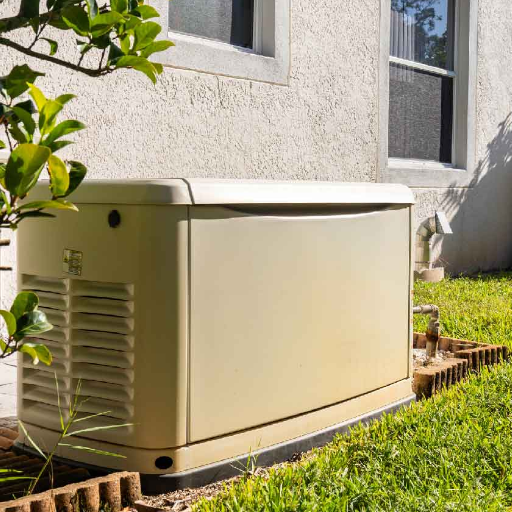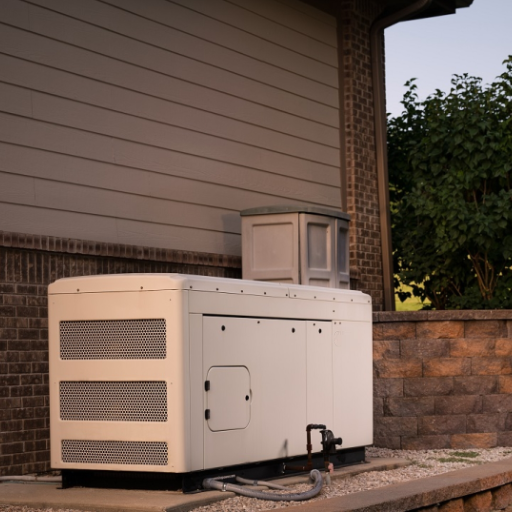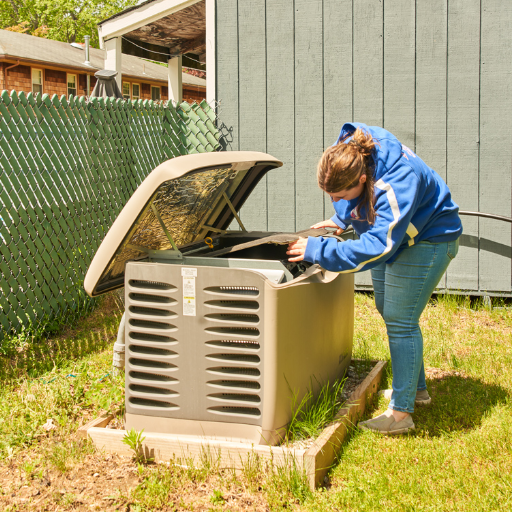Virgin Islanders have historically had concerns about power failures and water supply. Both these factors disrupt the daily life of the common man and the crucial infrastructure. The first step toward solving the problem and preparing for the future is to understand the extent of the issue. This post examines the Virgin Islands Power Outages Map, a valuable resource that facilitates understanding of the frequency and distribution of outages across the area. Discussing the causes of power and water outages will provide readers with valuable insight into the problems faced and possible solutions for a more secure and resilient future.
Overview of Power Outages in the Virgin Islands

Some island-wide power outages fell under blackouts due to aging infrastructure, extreme weather conditions, and unfavorable energy-resource management. Generation is still relatively centralized in the region, and as a consequence, damage occurs during storms or hurricanes. Federal funding is sometimes slow to reach the territory for electrical upgrades, payment procedures are cumbersome, and, finally, logistics are significantly more complicated and expensive than on the mainland. Hence, such blackouts disrupt the day-to-day affairs of people as well as the economy, motivating an urgent call to invest in resilient energy solutions and alternative power generation means, such as solar or wind, for enhanced resilience.
Current Status of Power Supply
Power supply in the region faces severe problems and demands urgent, robust improvements. Power outages have continued to grow in importance, with specific areas facing 8-10 outages per annum, each with durations ranging from a few hours to days during intense weather incidents. The heavy reliance on fossil-fuel-based centralized grids further reduces efficiency since it makes the system expensive and environmentally unsustainable.
Recent statistics show that renewable energy accounts for less than 20% of the total energy portfolio, providing glaring evidence that the region is slow in embracing cleaner forms of energy. This dependency on non-renewable sources not only increases greenhouse gas emissions but also raises questions about energy security as fuel prices fluctuate in international markets.
The scheme of power supply has not evolved significantly, mainly due to budget deficits and outdated infrastructure. For instance, transmission lines in this region that are over 60% are above 30 years old and are prone to failure once placed under stress. According to several project case studies, solar microgrids in rural community setups can reduce blackout durations by approximately 30% in areas where the systems have been implemented on a small scale.
Putting all the evidence together calls for significant reinvestment in renewable energy projects and advanced grid technologies to help stabilize the power supply and reduce costs, thereby ensuring resilience against extreme weather conditions and other disruptions.
Historical Context of Power Outages
Power failures have historically presented significant challenges, with a perfect storm or combination of forces made up of nature-induced disasters, aging infrastructure, and increased consumer demand on energy systems. Below are five monumental historical instances of power outages occasioned by respective causes, thereby underscoring their effects:
- The 1965 Northeast Blackout
This wide-scale blackout affected some 30 million people in the United States and Canada. A faulty transmission line relay near Ontario was the fault, alerting about weaknesses that existed in interconnected grid systems.
- The New York City Blackout of 1977
The blackout, occasioned by a series of lightning strikes, kept New York City in utter darkness for about 25 hours, and mayhem, with lootings accompanying it, highlighted the necessity of planned contingencies for urban energy systems.
- India Blackout of 2012
Amongst the most significant power outages in history, it left approximately 620 million people without electricity. Triggered by high demand and grid overloading, it underscored the challenges of handling energy supply in a fast-growing economy.
- The California Energy Crisis (2000-2001)
The rolling blackouts were caused by manipulated electricity markets and supply shortages. It put a spotlight on the risks deregulation and volatility in energy systems could cause.
- Texas Winter Storm Blackout of 2021
Severe weather caused equipment failure, resulting in a surge in demand and, in turn, leaving millions of people without power for days. The crisis highlighted situational vulnerabilities in energy systems that were that are unprepared for such extremes.
The above instances in history serve as core reminders that demand further innovation in energy infrastructure, building up resilience, and a continued transition toward sustainable energy sources.
Role of the Virgin Islands Water and Power Authority
The critical provision of reliable electricity and water services to the residents and businesses in the U.S. Virgin Islands falls under WAPA. In the meantime, infrastructure is being modernized, and renewable energy sources are being considered.
Impact of Power Outages on Local Communities
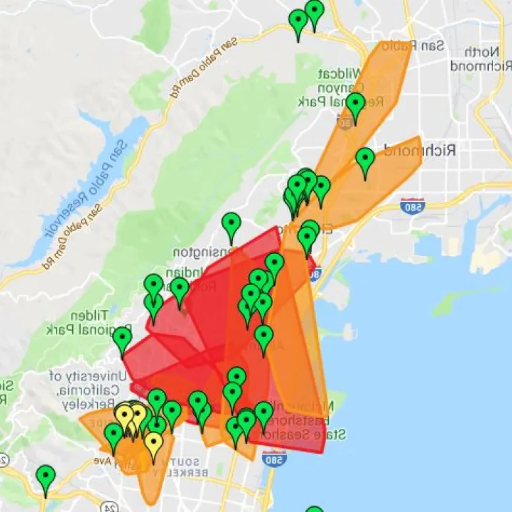
Power outages impact day-to-day life in local communities, affecting several aspects of households and businesses. Residents face problems, including spoiled food, a lack of air conditioning, and communication becomes a bit difficult as options for charging electronic devices become limited. Businesses lose revenue while their operations are on hold and equipment gets damaged. Critical services, such as health facilities, require a stable power supply. To keep patients safe and well, they may, at times, need backup generators. Yet, some interruptions prove why resilient energy infrastructure is necessary to lessen impacts on communities.
Effects on Daily Life and Services
Outages caused by storms and other incidents can disrupt daily routines and hinder the provision of essential services. Another example: the U.S. experienced an estimated 1.33 billion hours of power outages in 2021 alone, marking the size of the issue. Unplanned power outages lead to numerous inconveniences, including spoiled food inside refrigerators, the loss of air conditioning or heating during severe weather, and people working from home unable to connect to the internet.
During an extended power outage, the healthcare sector and emergency responders suffer the most significant strain. Back-up generators installed in hospitals have become a significant concern, with a 2018 study finding that approximately 60% of such systems either failed or experienced operational issues during prolonged power outages. Of course, businesses also incur significant losses. For instance, the average cost for a mid-sized to large company due to a one-hour power outage was estimated to be between $ 42,000 and $ 100,000.
Transportation often includes a host of inconveniences, such as malfunctioning traffic signals that can lead to accidents and delays. Public transport systems operating with electricity—whether subways or electric trains—often come to a halt, leaving people in limbo. These disruptions necessitate enhancements to grid stability, improvements in emergency preparedness, and the acceleration of renewable energy solutions to mitigate the impact of power outages on society.
Impact on Local Businesses
Power outages can strike a local business, forcibly interrupting its operations and severely impacting its finances. Here are five impacts that extort local companies:
Revenue Loss
Many businesses, especially small ones, rely on daily operations to generate immediate income. An abrupt, unforeseen power outage can unexpectedly halt sales activities, thereby causing shops and restaurants to close and resulting in daily revenue drops. At the same time, one such report states that small businesses can lose an average of $5,000 per day during a power outage.
Inventory Spoilage
Grocery stores, restaurants, and other food-related outlets are the most vulnerable. If power is not restored quickly, perishable goods stored in refrigerators or freezers can spoil and go to waste. Such an outage lasting more than 4 hours may result in thousands of dollars in spoiled inventory.
Operational Downtime
Many essential operational activities cannot be enabled without power, such as point-of-sale systems, computers, and machinery. Such downtimes can affect revenue but may also erode customer trust if repeated incidents of delayed or canceled services occur.
Data Loss and Security Risks
Businesses that rely on digital systems are vulnerable to data risks or corruption during outages. At the same time, however, their security systems, such as cameras and alarms, may be rendered inoperable, leaving their premises vulnerable to theft or vandalism.
Decrease in Employee Productivity
Employees cannot perform their jobs during power outages that prevent them from accessing machines, computers, and the Internet. For example, an average of 30% of productivity is lost across office-based businesses during an outage, hence the need for backup solutions.
The foregoing factors underscore the need for backup generators, surge protection equipment, and contingency plans further to mitigate the impact of power outages on local businesses.
Community Resilience and Response
I see that community resilience and response to power outages are proactive planning and collective effort. Back-up systems like the on-demand generators and alternative power sources should be relied upon. Additionally, strong community communication networks enable everyone to receive updates and resources quickly during a crisis. Working together, coupled with preparedness, will surely minimize disruptions and speed up recovery.
Tracking Power Outages Effectively
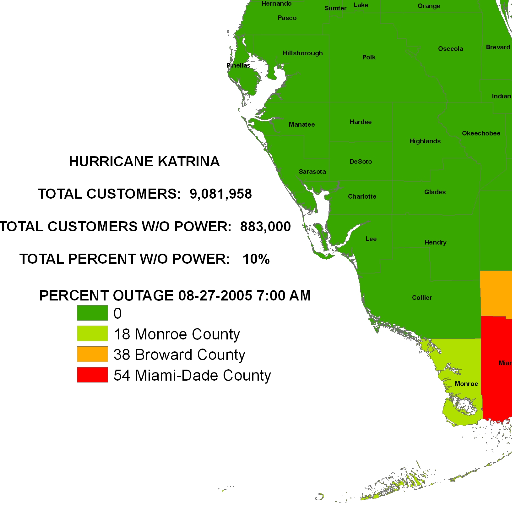
A sure way to track outages effectively is to monitor reputable outlets, such as your local utility company, which usually provides a real-time outage map and reporting system. You can also use mobile applications and online tools, such as regional weather and energy monitoring websites, to stay up-to-date. Such notifications can also be sent to you via text or email if you register for the service from your local utility companies. Another level of observation is to keep an eye on the local news for reports on major power outages and recovery operations. With this knowledge, you can stay informed and keep yourself protected throughout outages.
Utilizing the Virgin Islands Power Outages Map
The Virgin Islands Power Outages Map is a widely used tool in tracking and accommodating ongoing power disruptions on a regional basis. This edition of the interactive map visually outlines the affected areas, down to specific neighborhoods and regions, that are currently experiencing an outage. Real-time information retains users’ interest, keeping them updated with restoration works and allowing for preparation on the part of the residents and businesses.
Further complementing the map, a brief Google Search also yields more information. Typing in “Virgin Islands power outage updates” will generate statistics that include the number of households affected, the expected restoration time, and reports on the causes of the outage, such as adverse weather or technical failures. The search may contain links related to announcements from utility companies, community forums, or even live news coverage. This additional information, paired with the outage maps, provides comprehensive insight into the current scenario, enabling better decision-making for on-the-spot preparation and adaptable work.
Benefits of Real-Time Updates
Real-time updates present multiple benefits, especially during critical situations such as power outages, natural disasters, or other emergencies. By accurately and timely informing, the efficacy of responding can, therefore, significantly increase. Here are five of the most essential benefits of real-time updates:
- Improved Decision-Making: Immediate and accurate information enables individuals and organizations to make informed decisions, such as planning evacuation routes or scheduling activities around the disruption.
- Quicker Emergency Response: Emergency services and utility providers utilize real-time updates to identify problems promptly, allocate resources effectively, and reduce response time when a crisis arises.
- Better Public Safety: The public receives updates on dangerous situations, such as hazardous weather conditions or large-scale outages, which helps mitigate risks and enables communities to take preventive action.
- Save Time and Resources: Businesses and homes can utilize real-time data to adjust their workflows or everyday activities, minimizing interruptions and resource wastage.
- Enhanced Communication Platform: These types of alerts foster better communication among utilities, the emergency population, and technicians, building trust among their members and ensuring the prompt dissemination of vital information.
Resources for Accurate Information
The sources of legitimate kinds of information include the National Weather Service, Centers for Disease Control and Prevention, and other government or educational websites available for access through the latest Google search tools.
Preparedness Tips for Residents
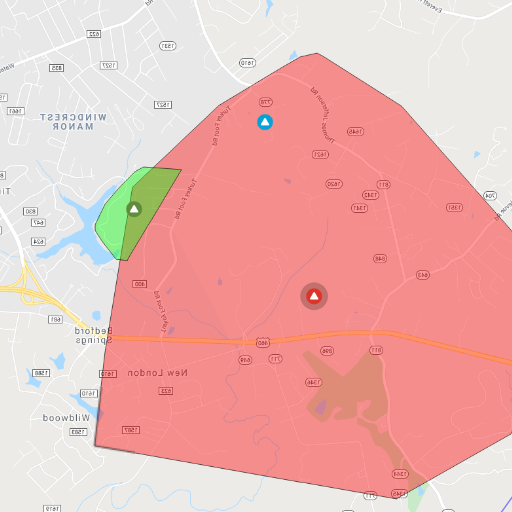
- Stay Alert on Early Warnings
Register for alerts on local emergencies and weather warnings granted by the government or one of the reliable news outlets to be kept aware in good time.
- Assemble an Emergency Kit
The kit should consist of essential items, such as non-perishable food, water, medicines, flashlights, and extra batteries, in addition to a basic first-aid kit.
- Establish a Communication Plan
Determine how to communicate with one another in case of an emergency and where to meet should separation occur.
- Evacuation Routes
Get yourself familiar with the nearest evacuation routes and shelters in your neighborhood.
- Secure Your Home
Examine your property for any hazards, such as loose objects that may become dangerous when extreme weather strikes, and fortify doors and windows as necessary.
- Plan for Special Needs
Special consideration should be given to children, elderly family members, pets, or persons with disabilities in all arrangements and kits.
- Practice Drills Often
Conduct and participate in household emergency drills to ensure that everyone knows what to do in various scenarios.
Creating a Power Outage Emergency Kit
A power outage emergency kit is a must for preparation during sudden blackouts. Presently, the following recommendations can be considered essential for holding together that kit:
- Flashlights and Batteries
Carry superb quality flashlights and an ample supply of extra batteries. Avoid using candles, as they may pose a fire hazard.
- Portable Power Banks
Keep your portable power banks or solar-powered chargers fully charged. These devices serve as backup charging sources for essential electronics, such as your cell phone or medical devices.
- Non-Perishable Food and Water
Keep at least three days of shelf-stable foods and one gallon of water per person per day. The CDC recommended a sufficient amount of supplies for any emergency.
- Manual Tools
A man can never go far without his manual tools. Keep your manual tools within reach. A manual can opener for canned food, along with some basic tools, can enable one to make minor repairs during the outage.
- First Aid Supplies
Stock the first aid kit with bandages, antiseptic sprays, pain relievers, and any other crucial medicines required by family members.
- Warm Blankets and Clothing
Keep blankets, jackets, and gloves to stay warm during prolonged power outages, especially in winter.
- Emergency Lighting
Illuminate your home safely using LED lanterns or lights.
- Backup Generator
Consider purchasing a generator to provide power to critical appliances. Always remember to use it outdoors and follow the manufacturer’s safety instructions.
- Documents of Importance
Keep copies of documents such as personal identification, medical records, insurance information, and any other relevant information that may be needed for the house or the family’s future situation. Store them in a waterproof and portable container.
- Local Emergency Contacts and Radio
Keep a battery-operated or hand-crank radio to receive updates. Ensure you have an up-to-date list of local emergency contacts for assistance.
By having these items on hand, you will be better equipped to manage an outage safely and minimize disruptions to your daily life. Check your supplies regularly and update them to ensure you are always prepared when an emergency arises.
Establishing Communication Plans
In times of crisis, an emergency communication plan ensures the effective exchange of information among all parties. Some essential points to build an effective strategy for communication are:
- Primary and Secondary Contacts
Establish a primary point of contact within the household or group, and an alternative point of contact outside the geographical area. This measure aims to ensure the relay of important information if local networks are overloaded.
- Practice Using Communication Tools
Allowing all parties to become familiar with tools like text messaging, which are more likely to get through during peak network congestion times than calls. Additionally, consider using satellite phones or emergency communication apps in case of cell network failure.
- Prepare an Emergency Phone Number List
List essential phone numbers, such as those of family members, close friends, and local emergency services. Ensure that you have both physical and electronic copies of the list and place them in easily accessible locations.
- Coordinate on Meeting Places and Procedures
Select meeting points in case all communication channels are disrupted. Select easily identifiable locations near the home and others further away, depending on the situation.
- Review and Update Permanently
Hold regular meetings to discuss the communication plan, involving all parties, and consider updates to phone numbers, addresses, or changes in protocol to keep the plan relevant and valuable.
Such steps facilitate crisis-related clarifications and transparent communication through various channels, thereby ensuring easy coordination towards a timely and effective response.
Staying Informed Through Social Media and Other Channels
Obtaining information from social media and other channels ensures having updates that are timely and accurate. We rely on the accounts of all entities, including local authorities, emergency services, and reputable news sources, for receiving and disseminating critical information in real-time. Additionally, I utilize various apps and tools that continually send out warnings about severe weather, emergencies, or other significant events, ensuring preparedness and an active response.
Future of Power and Water Services in the Virgin Islands
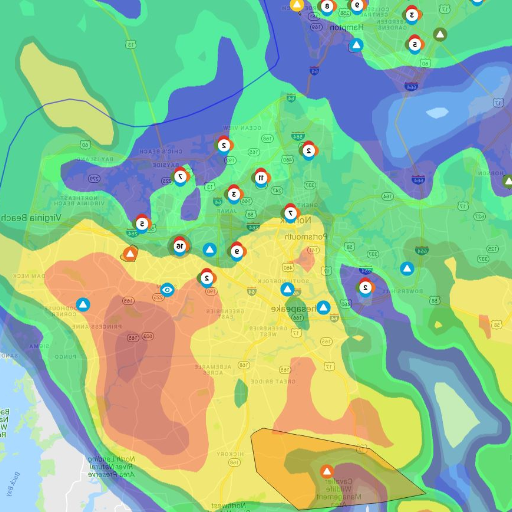
Sustainable development and resilience to natural disasters are among the newer foundations for envisioning the future of power and water services in the Virgin Islands. Infrastructure is currently being modernized, incorporating renewable sources such as solar and wind to reduce dependency on imported fuel. Additionally, efforts are underway to improve water systems by upgrading desalination plants and increasing storage capacity to meet the growing demand. To provide reliable, efficient, and environmentally friendly services for residents, even in the face of climate change and other disturbances, these are the techniques to ensure. The local authorities are working closely with experts and stakeholders of interest to ensure the smooth implementation of the plans discussed above.
Innovations in Power Supply and Management
Modernization and improvement of power supply systems are going on all over the world. One of the significant developments is the integration of renewable sources, such as solar, wind, and hydro, with the grid. According to the International Energy Agency (IEA), by 2025, nearly 90% of the global power capacity increase is expected to come from renewable energy sources. This would mean lowered greenhouse gas emissions and lesser dependence on fossil fuels.
Another breakthrough is an advanced smart grid technology. The smart grid utilizes digital communication tools to monitor and control electricity consumption accurately. This would enable real-time power use analysis, thereby ensuring a balanced power supply and reducing energy wastage. The U.S. Department of Energy, for instance, states that smart grids can achieve up to 9% better grid efficiency, resulting in energy cost savings of billions of dollars.
Battery energy storage systems have also contributed to the reliability of the power supply. These storage systems are often partnered with renewable energy plants to store energy generated in excess during peak generation periods and release it when demand is high. The global battery storage capacity is expected to exceed 400 GW by 2030, representing a significant increase from the 17 GW currently installed as of 2022 (BloombergNEF). This innovation enables a steady power output and enhances resilience against failures.
Then, there are microgrids, which are quickly becoming an accepted approach for decentralized energy management. These locally distributed grids can operate independently or connect to the main grid to share the load, thereby providing an alternative during blackouts and assisting in the generation of renewable energy. For example, microgrids are being increasingly deployed in areas that suffer from extreme weather events to enhance energy security.
All these innovations aim to ensure the effective operation of a sustainable, resilient, and efficient power supply system capable of meeting the world’s energy demand while minimizing environmental degradation.
Government Initiatives and Community Involvement
Governments and communities play a crucial role in developing sustainable energy solutions. Governments can provide incentivizing policies, such as tax credits for renewable energy development, and also fund research into green technologies. However, community activities play a crucial role in grassroots efforts by supporting local renewable energy projects, educating citizens to adopt greener solutions, and promoting energy conservation. Together, these efforts represent an integrated pathway leading to a truly resilient and green energy future.
Long-Term Solutions for Reliability
Long-term development must prioritize increasing energy reliability while maintaining sustainability to achieve energy security. Data and analyses support the five solutions below:
- Expansion of Energy Storage Systems
Large-scale energy storage systems can absorb excess power generated from renewable sources and discharge energy during low-generation hours. Significant examples of such storage systems include lithium-ion batteries and nascent solid-state batteries. For instance, the worldwide energy storage market is estimated to grow at a CAGR of 20% by 2030, thus enhancing grid reliability.
- Diversification of Energy Sources
The inclusion of wind, solar, hydro, and geothermal energy systems eliminates singular dependence on a particular resource and enhances system robustness. Data reveals that regions with diversified energy portfolios rarely experience power outages and stable ranges of electricity prices.
- Grid Infrastructure Upgrades
By upgrading the transmission and distribution network, network efficiency can be enhanced, resulting in a reduction in outages. The smart grid comprises enhanced sensors and automation that monitor in real-time and can respond swiftly to any disruption. According to some reports, transmission losses can be lessened by 30 percent through countries investing in grid upgradation.
- Development of Decentralized Energy Systems
Decentralized systems, including community microgrids, empower local communities to generate and manage their energy, thereby enhancing reliability. Decentralized systems enhance energy access in remote and underserved communities, serving as a backup power source during times of crisis.
- Investment in Research and Innovation
Continuous investment in new technology, such as hydrogen fuel cells and carbon capture, is crucial to maintaining energy reliability in the long run. Hydrogen may provide 10 to 15% of the world’s clean and reliable energy by 2050, according to the global energy forecast.
In conjunction, these provide a firm and adaptable foundation for sustainable and reliable energy, both now and in the future, as they adapt to changing demands and climate challenges.
References
-
Territory of the U.S. Virgin Islands – Energy Infrastructure Risk Profile
Link to source
This document examines the risks to the energy infrastructure in the U.S. Virgin Islands. -
Dataset of Recorded Electricity Outages by United States
Link to source
A dataset providing county-level estimates of electricity outages, published in Nature. -
Resilience Analysis of Potable Water Service after Power Outages
Link to source
A case study on resilience analysis for potable water systems during long-term power outages.
Frequently Asked Questions (FAQ)
What should I do during a power outage in the Virgin Islands?
During a power outage in the Virgin Islands, it’s essential to stay calm and ensure your safety. Check your flashlight and batteries, and avoid opening the refrigerator or freezer to keep food from spoiling. You can also check the official WAPA (Water and Power Authority) website or their Facebook page for updates on the outage and estimated restoration times.
How can I find the latest Virgin Islands power outage map?
The latest Virgin Islands power outages map can typically be found on the official WAPA website or through local news outlets. They provide real-time updates on outages and affected areas, helping you stay informed about your power status.
Who should I contact for support during a power outage in the USVI?
If you experience a power outage in the USVI, you should contact WAPA for support. They can provide information on the outage status and any ongoing restoration efforts. You may also find useful updates on their social media platforms.
Is there a way to receive updates on power outages in St. Thomas?
Yes, residents of St. Thomas can sign up for WAPA notifications to receive updates on power outages. You can also follow their official Facebook page for real-time information and announcements regarding outages and restoration efforts.
What causes power outages in the Virgin Islands?
Various factors, including severe weather events, equipment failure, or maintenance work by WAPA, can cause power outages in the Virgin Islands. Natural disasters, such as hurricanes, are particularly known to disrupt power supplies in the region.
Can I report a power outage online in the Virgin Islands?
Yes, WAPA provides an online platform for customers to report power outages. You can visit their official website to fill out a form or contact their customer service directly for assistance.
How long do power outages usually last in St. Thomas?
The duration of power outages in St. Thomas can vary widely based on the cause of the outage. Some may be resolved within a few hours, while others, particularly those caused by severe weather or significant infrastructure damage, can take several days to fix. Checking the WAPA updates can provide an estimated restoration time.
Are there any tips for preparing for power outages in the Virgin Islands?
To prepare for potential power outages in the Virgin Islands, consider keeping a supply of non-perishable food, water, flashlights, and batteries. Additionally, having a backup power source, such as a generator, can be beneficial. Stay informed about local weather conditions and follow WAPA for any alerts regarding outages.




